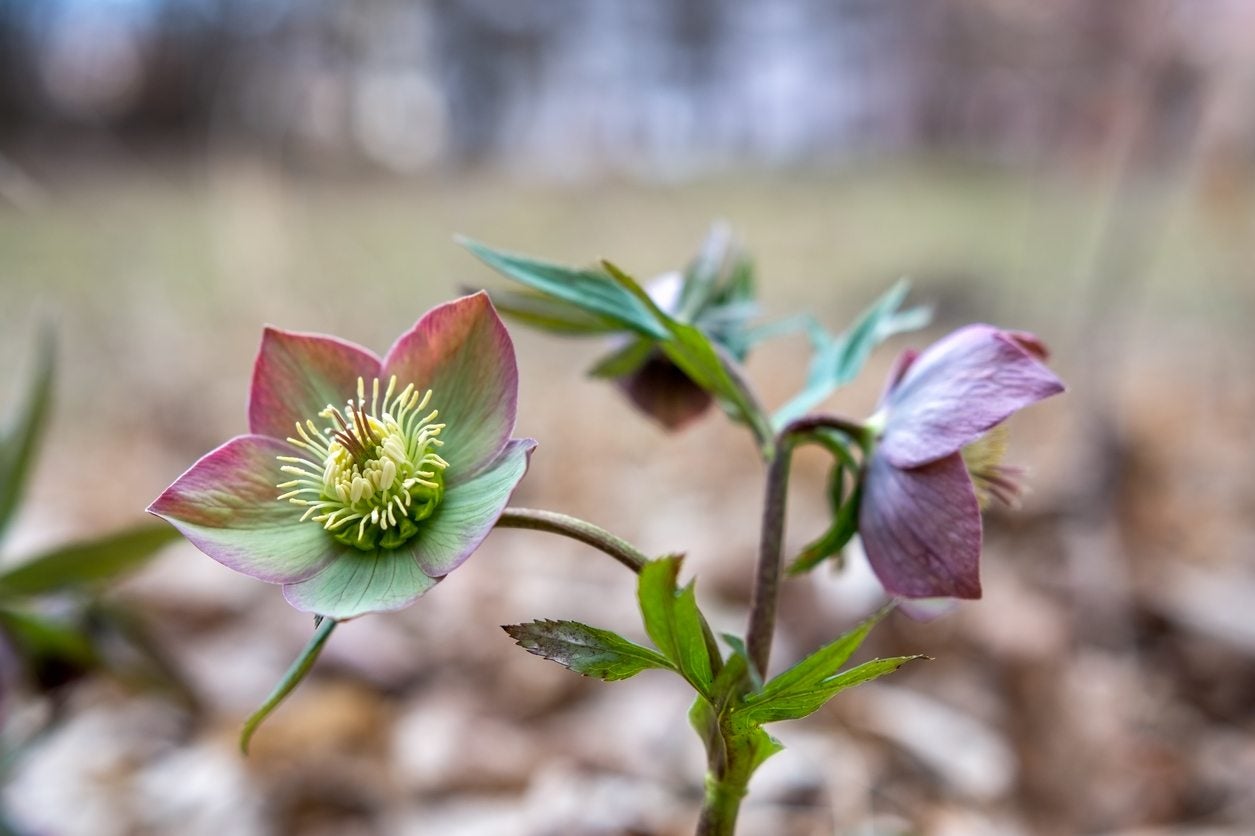Hellebore Plant Problems: Learn About Hellebore Pests And Diseases


Have you ever heard of Christmas roses or Lenten roses? These are two common names used for hellebore plants, evergreen perennials and garden favorites. Hellebores are often the first plants to flower in spring and can bloom into winter. If you are thinking about planting hellebores, you’ll want to know what you are getting into. Yes, you may have problems with hellebores, but they will be few and far between. Hellebore plant problems can usually be solved with a little attention and care. Read on for information on hellebore pests and diseases and tips on managing hellebore issues.
Problems with Hellebores
There is so much to love about hellebores. With shiny evergreen leaves and lovely, long-blooming flowers, hellebores thrive in shade and bloom when other plants snooze. This makes managing hellebore issues a priority. Hellebores are quite healthy and vigorous as well, and not particularly susceptible to pests. However, you’ll invite problems with hellebores if you don’t give them the growing conditions they need. For example, hellebores are very tolerant of different soils, but if you grow them in waterlogged soil, you can expect hellebore plant problems. Be sure the soil, whether acid or alkaline, offers decent drainage. Another example of inviting problems with hellebores involves water. Hellebore plant problems can arise from improper attention to watering. Hellebores grow best with some irrigation. While these plants are drought resistant, once their root systems are mature and established, they must have regular water when first transplanted. This is true of every plant in your garden, so no big surprise. Also, don’t lean too heavily on the drought resistant claim. Hellebores won’t do well in extreme drought at any time.
Hellebore Pests and Diseases
Hellebore pests and diseases don’t take down these healthy plants very often, but aphids can sometimes be a problem. Look inside the blossoms and on new leaves. If you see a sticky substance dripping down, it is likely honeydew from aphids. If you notice aphids on your plants, first try washing them off with a hose. This usually does the trick. If not, import ladybugs or spray the aphids with nontoxic neem oil. Sometimes snails and slugs eat seedlings or new foliage. Your best bet is to pick them off at night and move them on their way. Many different types of fungal infections can attack hellebore, but it’s not that frequent an occurrence. Gardeners who don’t like to use fungal sprays can simply remove foliage and entire plants if they are vulnerable. One destructive disease is called Black Death. As the name indicates, it is one of the hellebore diseases that can kill the plants. You’ll recognize it by the black streaks and blotches that appear on leaves and flowers. You probably won’t see this disease, though, as it tends to show up mostly in nurseries, not home gardens. If you do, don’t try to treat it. Just dig up and destroy infected plants.
Sign up for the Gardening Know How newsletter today and receive a free copy of our e-book "How to Grow Delicious Tomatoes".

Teo Spengler is a master gardener and a docent at the San Francisco Botanical Garden, where she hosts public tours. She has studied horticulture and written about nature, trees, plants, and gardening for more than two decades, following a career as an attorney and legal writer. Her extended family includes some 30 houseplants and hundreds of outdoor plants, including 250 trees, which are her main passion. Spengler currently splits her life between San Francisco and the French Basque Country, though she was raised in Alaska, giving her experience of gardening in a range of climates.